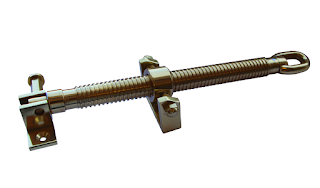Understanding Multipoint Locks
Identifying the different multipoint locks
You may be looking to replace damaged parts on your doors or to strengthen the security of your home. It can be a little overwhelming at first seeing the variety of terms used and the varying specifications across each one, especially when there are so many types and variations. With this blog post you should reach a better understanding of what the different pieces of product information mean.
Next up I have drawn up a technical graphic to help explain the measurements given with multipoint lock specifications.
- A: Total length of the multipoint lock.
- B/C: Locking Points - Distance from the PZ centre to the locking points.
- D/E: PZ Centre(s) - distance from the centre of the spindle hole to the centre of the top section of the cylinder.
- F: Backset- Distance from the edge of the lock case to the centre of the cylinder.
Different multipoint locks have different means of operation that affect the handles and locks. Below are some examples of the various types and their abbreviations.
- L/L - Lever / Lever.
- To Lock, lift handle upwards and turn the key one full time.
- To Unlock, Turn the key one full rotation and push down on the handle.
- T/S - Twin Spindle.
- To Lock, Lift the handle to engage locking points and turn the key one full rotation.
- To open from the inside, Turn the key and push down on the handle.
- To open from the outside, Operate the same as from inside but turn the key again to release the door latch.
- F/L - Fast Lock.
- To Lock, simply pull the handle upwards to engage locking points.
- To unlock, operate as normal as seen on the previous locking types.
- K - Key operated.
- To lock, turn the key as many times as needed to engage all locking points and the deadlock.
- To unlock, operate the same as locking.
Hopefully the above information can help you out when looking into getting the right multipoint lock for your needs. Now that you know what to look for why not take a look at our stock online.




Comments
Anti-snap Locks Pontefract